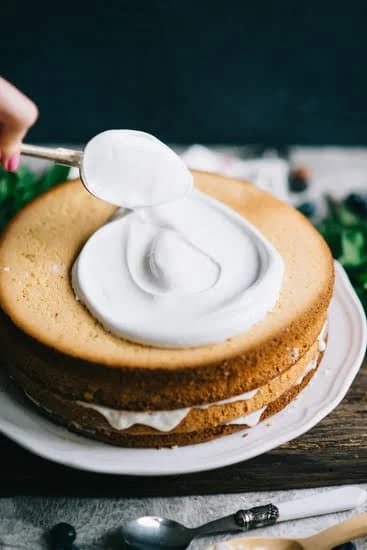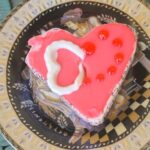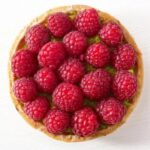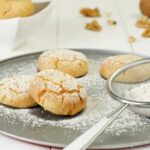Cake icing and decorating is not just the final touch on a cake, but an art form that can transform a simple dessert into a work of edible art. The mesmerizing world of cake icing and decorating offers endless possibilities for creativity and imagination, allowing bakers to showcase their skills and create visually captivating masterpieces.
Cake presentation plays a crucial role in enhancing the overall experience of enjoying a slice of cake. A beautifully decorated cake not only looks impressive but also creates anticipation and excitement for what lies beneath the frosting. From intricate designs to smooth finishes, the art of cake icing elevates the aesthetic appeal and adds an element of elegance to any occasion or celebration.
In this article, we will delve into the different types of cake icing techniques, exploring classics like buttercream icing known for its versatility, as well as fondant icing that gives cakes a flawless and smooth finish. We will also learn about royal icing, perfect for creating intricate designs and details, and ganache icing that offers a rich and indulgent option.
Moreover, we will discuss essential tools that every aspiring cake decorator should have in their arsenal. Piping bags and tips are key to achieving different shapes and patterns while an offset spatula ensures smooth and even layers of icing. A turntable makes the process easier and more efficient, while an icing smoother helps achieve a professional finish on the surface of the cake.
Join us as we embark on a journey through the enchanting world of cake icing and decorating. Discover step-by-step guides on how to properly ice a cake, popular designs and ideas to inspire your creativity, as well as flavors and fillings that pair perfectly with different frosting choices. Be prepared for common mistakes to avoid during the decorating process, as well as troubleshooting tips for common issues that may arise.
Unleash your creativity with cake icing and decorating – where edible art meets delectable treats.
Types of Cake Icing Techniques
Buttercream icing is a classic and versatile choice when it comes to cake decorating. It is made by mixing butter, powdered sugar, and flavorings such as vanilla or chocolate. Buttercream can be easily colored and piped into various shapes and patterns, making it a popular choice for creating intricate designs on cakes. It also provides a smooth and creamy texture that pairs well with different flavors of cakes.
Fondant icing is another technique commonly used in cake decorating. Fondant is a smooth, rolled icing made from gelatin, glycerin, and powdered sugar. It provides a flawless finish on cakes and allows for intricate detailing and sculpting. Fondant can be colored, shaped, and molded into various shapes like flowers or bows to create stunning designs on cakes.
Royal icing is typically used for decorative purposes due to its ability to harden when dry. It is made from egg whites or meringue powder mixed with powdered sugar. Royal icing creates an ideal medium for adding intricate details or delicate decorations to cakes, such as piping lace patterns or creating 3D figures.
Ganache icing is a rich and indulgent option that adds elegance to any cake. It is made by combining chocolate and heavy cream until smooth and glossy. Ganache can be poured over the entire cake for a sleek finish or used as a filling between layers. It can also be whipped to create a lighter texture for piping decorative elements onto the cake.
| Type of Icing | Description |
|---|---|
| Buttercream icing | A classic and versatile choice that provides smooth texture and easy piping |
| Fondant icing | A rolled icing that creates flawless finishes on cakes; perfect for intricate designs |
| Royal icing | An icing that hardens when dry, ideal for adding intricate details or delicate decorations |
| Ganache icing | A rich and indulgent option made from chocolate and cream; adds elegance to cakes |
Essential Tools for Cake Icing and Decorating
Cake icing and decorating requires a variety of tools to achieve professional-looking results. Whether you’re a beginner or an experienced baker, having the right tools can make all the difference in your cake decorating journey.
One essential tool for cake icing and decorating is piping bags and tips. Piping bags allow you to control the flow of icing and create different shapes and patterns on your cake. Coupled with various tips, such as round, star, or petal tips, you can create beautiful borders, flowers, rosettes, and more.
Another important tool is the offset spatula. This long, flat tool with a bent handle allows you to spread icing evenly over the surface of the cake. Its angled design provides better control and helps achieve smooth finishes on both sides of the spatula.
A turntable is also a must-have tool for cake decorators. It’s a rotating platform that holds the cake while you ice it. By spinning the turntable as you decorate, it becomes easier to reach all areas of the cake without straining your arms or wrists. This not only saves time but also helps achieve more even and consistent results.
Lastly, an icing smoother is crucial for achieving a professional finish on your cakes. This tool is used to smooth out any imperfections or air bubbles in the icing after it has been applied. By gently running the smoother along the sides and top of the cake, you can create clean lines and a polished appearance.
Investing in these essential tools will not only enhance your cake decorating experience but also elevate the overall presentation of your cakes. With proper techniques and practice, you’ll be able to create stunning designs that will impress friends, family, or customers alike.
Step-by-Step Guide to Icing a Cake
Icing a cake may seem like a daunting task, but with the right techniques and tools, it can be an enjoyable and rewarding experience. Here is a step-by-step guide to help you achieve a beautifully iced cake:
- Prepping the cake layers: Before you start icing, it’s important to prepare your cake layers properly. Level each layer using a serrated knife or cake leveler to create an even surface. Fill any gaps between layers with frosting or filling of your choice. Stack the layers on top of each other, making sure they are centered.
- Crumb coating: To ensure a smooth finish, apply a thin layer of frosting all over the cake called a crumb coat. This helps to seal in crumbs and provide a stable base for the final layer of icing. Use an offset spatula to spread the frosting evenly, making sure to cover the entire cake.
- Applying the main icing: Once the crumb coat has set (about 10-15 minutes), it’s time to apply the main layer of icing. Begin by adding large dollops of frosting on top of the cake and use an offset spatula or bench scraper to spread it from the center towards the edges. Work your way around the sides, smoothing out any uneven areas as you go.
- Achieving different textures: If you prefer a smooth finish, continue smoothing out the icing using an icing smoother or bench scraper until you have achieved your desired look. For textured finishes such as ruffles or swirls, use a piping bag fitted with various tips to add decorative elements.
- Adding decorative touches: Once your cake is evenly coated with icing, it’s time to get creative. Piping bags and tips are essential tools for creating intricate designs, writing messages, or adding borders. You can also use stencils to create elegant patterns or dust the cake with powdered sugar for a simple yet elegant touch.
Remember, practice makes perfect when it comes to icing a cake. Don’t be discouraged if your first attempts aren’t flawless. With time and patience, you’ll develop your own unique style and techniques. So unleash your creativity and enjoy the artistic process of cake icing and decorating.
Popular Cake Icing Designs and Ideas
Rosette cake: Creating a stunning floral design
One popular cake icing design that never fails to impress is the rosette cake. This design features beautiful, intricate swirls of buttercream or other icing, arranged in the form of rosettes all over the cake. It creates a stunning floral effect that adds elegance and sophistication to any occasion.
To achieve this look, start by piping a small dollop of icing in the center of the cake, then continue to pipe concentric circles around it, making sure each layer slightly overlaps the previous one. Repeat this process until the entire cake is covered in rosettes. You can use different colored icings or vary the size and shape of your rosettes for added visual interest.
Ombre cake: Blending different shades for a gradient effect
Another eye-catching cake icing design is the ombre cake. This design involves blending different shades of frosting to create a seamless gradient effect on the cake’s surface. To make an ombre cake, start with a batch of buttercream frosting and divide it into separate bowls.
Add varying amounts of food coloring to each bowl to create a gradient of colors, from light to dark. For example, if you want a pink ombre cake, add just a touch of food coloring to one bowl for a pale shade and gradually increase the amount of food coloring as you move to the next bowl for deeper shades.
Frost your cake with these different shades using an offset spatula or piping bags, blending them together gently as you go along.
Naked Cake: Embracing the beauty of exposed cake layers
For those who prefer a more rustic and natural look, naked cakes are an excellent option. Naked cakes are characterized by thin layers of icing between their exposed layers of moist sponge cake. The result is a simple yet visually appealing cake that showcases the different flavors and textures of the cake itself. To create a naked cake, you’ll need to ensure that your cake layers are even and well-leveled.
Spread a thin layer of icing between each layer, allowing it to slightly protrude from the edges. You can then choose to lightly frost the top and sides of the cake for added stability or leave it completely naked for a fully exposed look. Decorate with fresh fruits, flowers, or dustings of powdered sugar to complete the aesthetic.
These popular cake icing designs offer just a glimpse into the creative possibilities that come with decorating cakes. With practice and experimentation, you can develop your own unique designs and techniques to create show-stopping cakes for any occasion. Remember to have fun with it and let your imagination run wild as you explore this mesmerizing world of cake icing and decorating.
Flavors and Fillings for Icing
When it comes to cake icing and decorating, the flavor and filling options are just as important as the design itself. The right combination of flavors can elevate a cake from ordinary to extraordinary. From classic buttercream variations to tangy fruit curds, there is a wide range of choices to suit every taste preference.
One popular choice for cake icing flavors is buttercream. Buttercream is a versatile option that can be customized with various flavors such as vanilla, chocolate, strawberry, and more. It provides a creamy and rich taste that pairs well with different types of cakes. For those who prefer a tangy burst of flavor, fruit curds are an excellent choice. Lemon curd, raspberry curd, and passionfruit curd are just a few examples that can add brightness and complexity to your cake.
Cream cheese frostings are another delicious option for cake icing. They have a slightly tangy flavor that complements cakes like carrot or red velvet perfectly. The creamy and smooth texture of cream cheese frosting adds an extra layer of indulgence to any cake. If you’re looking for something decadent and unexpected, whipped ganache fillings are sure to impress. This rich chocolate filling provides a delightful surprise when sliced into the finished cake.
| Flavor/Filling | Description |
|---|---|
| Buttercream Variations | A classic choice that can be customized with different flavors |
| Fruit Curds | Tangy fillings such as lemon, raspberry, or passionfruit curd |
| Cream Cheese Frostings | Perfect for pairing with carrot or red velvet cakes |
| Whipped Ganache Fillings | A decadent surprise inside the cake, made with rich chocolate ganache |
Common Icing and Decorating Mistakes to Avoid
Overmixing buttercream
One of the common mistakes to avoid when it comes to cake icing and decorating is overmixing buttercream. While it’s important to achieve a smooth and creamy texture, overmixing can lead to a dense and greasy result. When buttercream is overmixed, the fats in the butter start to separate, resulting in an unpleasant texture and consistency.
To avoid this, make sure to mix the ingredients just until they are well combined and smooth. If you notice that your buttercream is becoming greasy or curdled-looking, stop mixing immediately.
Applying icing on a warm cake
Another mistake to avoid is applying icing on a warm cake. This can result in melted icing disasters where the icing slides off or becomes runny. It’s important to let your cake cool completely before applying any type of icing or frosting.
When a cake is still warm, the heat can cause the icing to melt quickly, ruining all your hard work. To ensure that your cake has cooled down sufficiently, you can use a cake tester or toothpick inserted into the center of the cake. If it comes out clean and without any crumbs clinging to it, then your cake is ready for icing.
Rushing the decorating process
When it comes to intricate designs and details, one common mistake to avoid is rushing the decorating process. Cake decorating requires time and patience, especially when you’re working on complex designs or delicate piping work. Take your time with each step of the decorating process and give yourself enough time between each step for the various components of your design to set properly.
Rushing can lead to smudged decorations or uneven surfaces, taking away from the overall presentation of your cake. Remember that practicing patience will result in stunning and professional-looking cakes.
Not considering the climate
An often overlooked factor when it comes to cake icing and decorating is the climate. The climate can have a significant impact on how your icing sets and holds up. In humid conditions, for example, buttercream can become soft and difficult to work with, while in extremely cold conditions, royal icing can take much longer to dry.
It’s important to consider the temperature and humidity of your environment when choosing your icing type and when working on intricate designs. Taking these factors into account will help you avoid disappointing outcomes such as melted or slow-drying icing.
By avoiding these common mistakes, you can ensure that your cake icing and decorating process goes smoothly. Remember to mix your buttercream just enough to combine the ingredients, let your cake cool completely before applying icing, take your time with each step of the decorating process, and consider the climate you are working in. With a little attention to detail and practice, you’ll be able to create beautifully decorated cakes that are sure to impress anyone who sees them.
Troubleshooting Common Cake Icing Issues
Icing a cake can sometimes come with its own set of challenges. From cracked icing to bleeding colors, it’s important to know how to troubleshoot these common issues to ensure a flawless finish. Here are some tips and techniques for overcoming these hurdles:
- Cracked or bulging icing: If you notice cracks or bulges in your icing, it could be due to several factors. One common cause is applying too much pressure when spreading the icing, which can create air pockets underneath. To prevent this, start with a thin layer of icing and gradually add more as needed.
Another cause could be that the cake layers were not level before icing, causing uneven pressure on the icing surface. Make sure to level your cake layers before stacking and filling them. - Air bubbles in fondant: Air bubbles can disrupt the smooth finish of fondant icing and make it look unprofessional. To prevent air bubbles, make sure to knead your fondant thoroughly before rolling it out. This will help remove any trapped air pockets within the fondant.
When applying the fondant to the cake, gently smooth it down with your hands or a fondant smoother, working from the center towards the edges. If you still notice air bubbles after applying the fondant, use a toothpick or needle to gently poke a hole in the bubble and press out the air. - Smudging or bleeding colors: Achieving clean and vibrant colors on your cake can be a challenge if they smudge or bleed into each other. One way to prevent this is by letting each color fully dry before applying another one next to it.
This will ensure that they don’t mix together and result in muddy colors. Additionally, using gel food coloring instead of liquid can help reduce bleeding because gel colors are less likely to liquefy and spread. - 4.Icing melting off: In warmer conditions, the main challenge can be preventing your icing from melting off the cake. To avoid this, it’s important to use a stable and heat-resistant icing like buttercream or ganache. Be sure to refrigerate your cake until right before serving to keep it as cool as possible. If you’re transporting the cake in warm weather, consider using an insulated cake carrier or cooling the car beforehand.
By understanding these common issues and having solutions on hand, you’ll be better equipped to troubleshoot any problems that arise while icing your cakes. Remember that practice makes perfect, and with time and patience, you’ll become more skilled at handling these challenges.
Conclusion
In conclusion, cake icing and decorating is an art form that allows individuals to unleash their creativity and transform a simple cake into a visual masterpiece. Throughout this article, we have explored the various techniques, tools, designs, flavors, and common mistakes associated with cake icing and decorating. It is evident that cake presentation plays a significant role in enhancing the overall experience of enjoying a slice of cake.
With the different types of icing techniques available such as buttercream, fondant, royal icing, and ganache, individuals have a wide range of options to choose from depending on their desired finish. The essential tools including piping bags and tips, offset spatula, turntable and icing smoother are crucial in achieving professional results on the surface of the cake.
By following the step-by-step guide provided in this article which includes prepping the cakes layers, crumb coating, applying the main icing, and adding decorative touches such as piping and stenciling options among others. Individuals can experiment with popular designs like rosette cakes or geode cakes while also considering flavors such as buttercream variations or fruit curds for fillings.
However, it is important for aspiring cake decorators to be aware of common mistakes to avoid such as overmixing buttercream or rushing through the decorating process. By taking these precautions into account individuals can troubleshoot issues related to cracked or bulging icing or smudging colors ensuring a flawless finish.
Ultimately, cake icing and decorating is an opportunity for individuals to let their imagination run wild and create visually captivating cakes that leave a lasting impression. So go ahead – unleash your creativity with cake icing and decorating. Whether you’re an amateur baker or an experienced decorator, remember to have fun with it and take pride in the stunning results you can achieve through this delightful art form.
Frequently Asked Questions
Is decorating icing the same as frosting?
Decorating icing and frosting are not exactly the same, although they share some similarities. Decorating icing is a type of icing that is specifically formulated for decorating purposes. It is usually thicker and has a stiffer consistency than traditional frosting.
The purpose of decorating icing is to hold its shape well when piped or molded into intricate designs on cakes or cookies. On the other hand, frosting tends to be smoother and creamier in texture, and it is often used to cover the entire surface of a cake. While both decorating icing and frosting can be made from similar ingredients such as powdered sugar, butter, or shortening, their varying consistencies make them different.
Is there a difference between cake icing and frosting?
Yes, there is indeed a distinction between cake icing and frosting. Cake icing typically refers to a thinner and more liquidy glaze-like substance that is poured over the top of a cake to create a glossy finish. It often contains ingredients like powdered sugar, milk or water, and sometimes flavored extracts for added taste.
Cake icing provides an easy way to add sweetness and moisture to a cake while giving it a simple coating. On the other hand, frosting has a thicker consistency compared to cake icing. Frosting is spreadable and can be whipped or blended until light and fluffy in order to frost an entire cake smoothly or pipe intricate decorations onto its surface.
Is frosting or icing better for decorating?
When it comes to decorating cakes or pastries, both frosting and icing have their advantages depending on the desired outcome you wish to achieve. However, many bakers tend to prefer using frosting for decorating purposes due to its smoothness and creaminess which leads to more refined results when spreading it onto cakes or piping intricate designs with pastry bags fitted with various tips. Frosting’s versatility allows for greater creativity when making detailed decorations such as flowers, borders, or written messages on cakes.
Its thicker consistency helps maintain stability in decorative shapes preventing them from melting easily like some icings might do in warmer temperatures. Nevertheless, the choice between frosting and icing for decorating ultimately depends on personal preference and the specific design requirements of the desired cake or pastry decoration.

Welcome to our cake decorating blog! My name is Destiny Flores, and I am the proud owner of a cake decorating business named Cake Karma. Our mission is to provide delicious, beautiful cakes for all occasions. We specialize in creating custom cakes that are tailored specifically to each customer’s individual needs and tastes.





